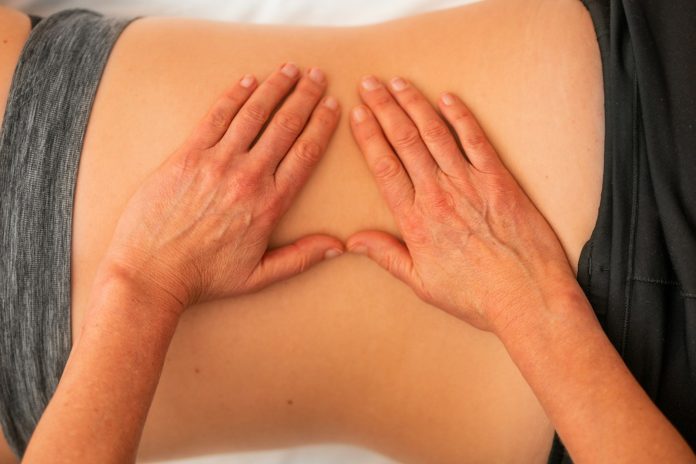Pulmonary rehabilitation
It is normal for people with lung disease to feel that their quality of life is greatly compromised. Shortness of breath, for instance, can make everyday exercises truly challenging. Even more regrettable, many people feel that there is little that should be possible to facilitate their side effects. Pulmonary Rehabilitation (PR) is a program designed to help people with lung disease. PR, by and large, consists of two sections: exercise and education.
Exercise training helps people with lung disease feel quite a bit better and have more energy. It likewise helps to diminish shortness of breath. Education gives people the apparatus they need to better comprehend their lung disease and how to oversee it. PR can help people with a wide range of lung diseases, including bronchitis, COPD, and pulmonary fibrosis.
1. Many people with constant lung disease can benefit from pulmonary rehabilitation.
Pulmonary rehabilitation (PR) is an extensive inpatient and short-term program that helps people with constant lung disease deal with their side effects and improve their quality of life. PR normally includes exercise training, education on lung disease and its management, and psychological support.
PR can be valuable for people with a wide range of types of constant lung disease, including COPD, bronchiectasis, interstitial lung disease, and pulmonary fibrosis. PR can help people with constant lung disease to:
Improve their exercise tolerance.
reduce their shortness of breath
improve their quality of life
Reduce their nervousness and gloom.
Learn how to better deal with their lung disease.
PR is generally delivered by a group of healthcare professionals, including pulmonary rehabilitation subject matter experts, exercise physiologists, and respiratory specialists. PR programs ordinarily last for 8–12 weeks, and most people with ongoing lung disease will see significant improvements in their side effects and quality of life in the wake of completing a PR program.
2. Pulmonary rehabilitation is an individualized program of exercise and education.
Pulmonary rehabilitation has been viewed as effective in reducing side effects and improving exercise tolerance in people with COPD. It can likewise improve quality of life, practical status, and reduce hospitalizations.
The education component of pulmonary rehabilitation helps patients comprehend their disease and how to oversee it. The exercise component helps patients improve their perseverance and strength.
Pulmonary rehabilitation is normally done on a short-term basis; however, it should likewise be possible in an inpatient setting.
3. The program is designed to help people with persistent lung disease improve their quality of life.
Pulmonary rehabilitation is a program designed to help people with persistent lung disease improve their quality of life. The program is commonly led by a group of experts who work with the individual to tailor a treatment plan that meets their particular necessities.
Pulmonary rehabilitation can help people with ongoing lung disease in various ways. The program can help improve an individual’s general fitness by increasing their perseverance and strength. It can likewise help to show people how to better deal with their lung disease so they can experience fewer side effects and a better quality of life.
The benefits of pulmonary rehabilitation are well documented. Studies have shown that the program can improve an individual’s exercise limit, quality of life, and capacity to perform day-to-day exercises. Pulmonary rehabilitation can likewise help reduce hospitalizations and emergency room visits.
In the event that you have been determined to have constant lung disease, talk with your doctor about whether pulmonary rehabilitation is right for you.
4. Pulmonary rehabilitation can help people with persistent lung disease to:
Pulmonary rehabilitation consists of a far-reaching exercise and educational program designed to help people with persistent lung disease carry on with as full and productive lives as could really be expected. Ongoing lung disease includes conditions like asthma, emphysema, and constant bronchitis. The goal of pulmonary rehabilitation is to help people with constant lung disease:
improved quality of life
-increased capacity to perform exercises of everyday living
increased capacity to exercise
diminished side effects
improved mental health
Pulmonary rehabilitation programs commonly last for 8 to 12 weeks and include two to three meetings each week. During every meeting, people with ongoing lung disease work with a group of health care professionals, including a pulmonologist, respiratory specialist, and exercise physiologist. The group works with every individual to foster an individualized exercise and education program.
Pulmonary rehabilitation can help people with persistent lung disease improve their quality of life, increase their capacity to perform exercises of everyday living, and increase their capacity to exercise. Pulmonary rehabilitation can likewise help to diminish side effects and improve mental health.
Deal with their side effects.
Patients with pulmonary disease frequently experience a great many side effects that can significantly interfere with their quality of life. While there is no solution for most pulmonary diseases, there are various things that patients can do to deal with their side effects and improve their everyday lives.
One of the most significant things that patients can do is stop smoking. Smoking is the leading cause of pulmonary disease, and even on the off chance that patients have already fostered the disease, quitting can help to slow the progression of the disease and improve side effects.
In addition to quitting smoking, patients can likewise take various medications to help deal with their side effects. This might include bronchodilators to improve airflow, steroids to reduce inflammation, and oxygen treatment to help make sure that the blood is properly oxygenated.
Patients with pulmonary disease may likewise find it helpful to make some changes to their lifestyle. This might include things like avoiding secondhand smoke, exercising regularly, and avoiding environmental poisons.
Pulmonary rehabilitation is another significant apparatus that can help patients deal with their side effects. This is a structured program of exercise and education that can help patients better figure out their disease and learn how to deal with its side effects.
Generally, there are various different things that patients with pulmonary disease can do to deal with their side effects and improve their quality of life. While there is no solution for the disease, these treatments can help patients feel improved and partake in a more dynamic and charming life.
Feel less breathless.
At the point when you have COPD, it is critical to do everything you can to feel less breathless. This might appear to be a troublesome undertaking; however, there are some things you can do to help.
Pulmonary rehabilitation is one of the best things you can do for yourself on the off chance that you have COPD. It is an exercise and education program that is tailored to your individual requirements. The program will help you increase your perseverance and strength and show you how to better deal with your breathlessness.
One more way to help yourself is to regularly remain dynamic and exercise. This does not mean that you need to go to the rec center and lift weights, yet basically, taking a brisk walk a couple of times a week for seven days can make a big difference. Exercise helps to increase your lung capacity and make your breathing muscles more grounded.
It is likewise essential to eat a healthy diet and to avoid tobacco smoke. Eating a diet that is rich in fruits and vegetables can help reduce inflammation in your lungs. Smoking tobacco is the most terrible thing you can do for your lungs, so it is critical to stop in the event that you are a smoker.
On the off chance that you follow these tips, you will surely start to feel less breathless in no time.
Increase their action levels.
Pulmonary rehabilitation is a type of exercise and education for people with constant lung conditions. The goals of pulmonary rehabilitation are to help people:
Increase their action levels.
improve their quality of life
reduce their side effects
improve their capacity to exercise
Pulmonary rehabilitation programs commonly last for 8 to 12 weeks and involve both group and individual meetings. During pulmonary rehabilitation, people with constant lung conditions work with respiratory advisors, exercise subject matter experts, and other healthcare professionals to gradually increase their movement levels.
Most pulmonary rehabilitation programs begin with a delicate walking program. As people with ongoing lung conditions become more OK with exercise, they gradually add more challenging exercises, for example, jogging and step climbing, to their workouts.
Pulmonary rehabilitation can be an effective way to help people with constant lung conditions lead dynamic, side-effect-free lives. In the event that you have a constant lung condition, converse with your doctor about whether pulmonary rehabilitation is right for you.
Pulmonary rehabilitation is a significant step in managing persistent lung disease. It can help you breathe more straightforwardly, improve your quality of life, and prevent further decline in your lung capability.






